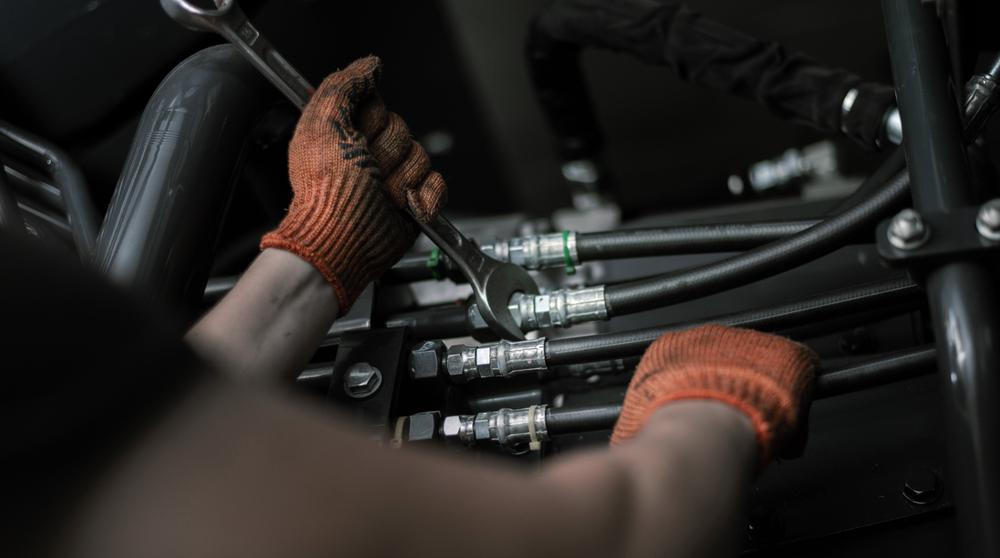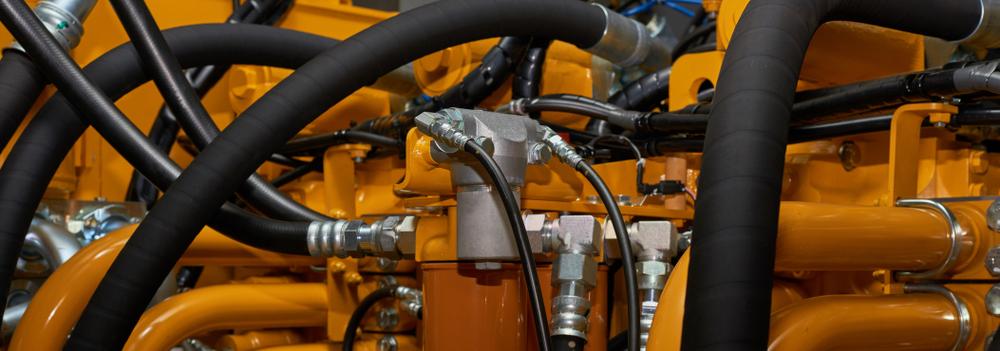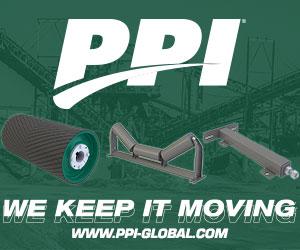Hydraulic fittings are found across nearly every industry, with a wide variety of uses and applications. Different types of fittings are designed for different applications and specifications. It is important to be familiar with the different types of hydraulic fittings to determine the best one to suit your required application, hose size, and assembly.
This article will explore what hydraulic hose fittings are, their applications, and the most common types, shapes, and materials they are made from. Understanding these key fitting types will allow you to make informed decisions when selecting the right fittings for your hydraulic system.
What Are Hydraulic Hose Fittings?
Quality industrial hydraulic hose fittings are a crucial component of any hydraulic system. Fittings allow hydraulic hoses to connect to various components and machines, and facilitate the transfer of hydraulic fluid and power.
Hydraulic fittings come in various sizes, materials, types of seals, and temperature and pressure tolerances. Some can allow or prevent the flow of fluids, and some can do both.
What Are Industrial Hydraulic Hose Fittings Used For?
Because industrial hydraulic hose fittings serve a number of purposes, they can be used for applications in a variety of industries. Some of these industries include:
- Construction and Heavy Machinery: Hydraulic hose fittings ensure reliable fluid transfer and power transmission in hydraulic systems for excavators, loaders, and cranes, enabling precise control and efficient operation.
- Manufacturing and Industrial Equipment: Machine tools, presses, and material handling equipment all need hydraulic hose fittings to ensure smooth operation and minimize downtime.
- Agriculture: Hydraulic hose fittings enable the efficient transfer of power and fluid in tractors, harvesters, and irrigation systems, thereby facilitating lifting, steering, and controlling attachments.
- Transportation and Automotive: From cars to heavy-duty trucks, hydraulic hose fittings are used in applications such as braking systems, power steering, suspension systems, and hydraulic lifts.
- Oil and Gas: This industry relies on hydraulic hose fittings for drilling, extraction, and transportation, providing fluid transfer and control in demanding environments.
3 Common Types of Industrial Hydraulic Hose Fittings
There are three main types of hydraulic hose fittings: the O-ring, the mated angle, and the tapered thread connectors. Other types are used in different and specialized applications, but those are the three most common.
A brief note on fitting gender descriptors: Conventionally, each half of a pair of mating connectors, or fittings in this case, is assigned the designation male or female. The female is generally the receptacle that receives and holds the male piece.
1. O-Ring Face Seal (ORFS)
An ORFS seal fitting has an O-ring at the flat face of the fitting. The seal is achieved by connecting the O-ring with the flat face of the female connection.
ORFS are ideal for high-pressure applications and provide a leakage-free connection. They are secure, reliable, and can eliminate leaks in hydraulic systems that operate at up to 6,000 PSI pressure. ORFS are often preferred because they are less likely to be over or under-tightened.
2. Mated Angle
These fittings have thread, followed by an angled plane (or taper) going around the whole fitting, referred to as the “flare”. The threads can be either straight or parallel.
The threads themselves do not form the seal; instead, they push the flares together. When the male and female are threaded together, the flares meet up and are “seated” or sealed together.
3. Tapered Threads
In a tapered thread fitting, the male has threads on the outside, and the female fitting has threads on the inside. The tapered thread deforms when they are threaded together. The consequent pressure on the couplings creates the seal.
Under high pressure, fluid may work through the threading over time, spiraling through the threads until it finds its way out. Plumber tape may be used to prevent this; however, the tape is prone to shredding and contaminating sensitive areas. Tapered threads are also prone to being over-torqued. These disadvantages often cause tapered threads to be prohibited for use in hydraulic and pneumatic systems.

Other Hydraulic Host Fitting Features to Consider
Other important features of hydraulic hose fittings include how they attach to the hose, their shape, and the material they are made from.
Permanently Crimped vs. Field Reusable
Hydraulic fittings can be attached to hydraulic hoses in two main ways: crimped fittings and field attachable fittings.
Field attachable or reusable fittings have a socket and nipple, and can be installed anywhere without using crimping equipment.
Crimped fittings are permanently sealed with a crimping machine. Permanent hydraulic fittings are much more widespread than reusable fittings. They have a reputation for being the most secure and reliable fitting, and are widely used in the fluid power industry.
Permanent fittings require the use of a crimping machine. Crimping machines range from large workshop variants to more portable handheld devices. Portable crimpers have become very popular and are suitable for on-site use.
Shape
Hydraulic hose fitting shapes allow hoses and components to connect, change direction, and split or combine fluid. Here is a list of common industrial hydraulic hose fitting shapes:
- Straight Fittings: These are the simplest hose fittings. They have a straight design and are used to connect two hoses or a hose to a component in a straight line.
- Elbow Fittings: These fittings have a bent or angled design. They are used when a change in direction is required in the hydraulic system. Elbow fittings come in various angles, such as 45 and 90 degrees, allowing flexibility in system design and installation.
- Tee Fittings: Tee fittings are T-shaped, and are used to split or combine hydraulic fluid flow. They enable the connection of three hoses or components, allowing for the branching or merging of hydraulic lines.
- Cross Fittings: Cross fittings, similar to tee fittings, have a cross-shaped design. They enable the connection of four hoses or components, allowing for more complex hydraulic system configurations.
- Flange Fittings: These fittings are used to connect hoses or components to a flanged surface. They provide a secure, leak-free connection, making them suitable for high-pressure applications.
Material
There are many different materials for hydraulic hose fittings. The most common fittings are made with stainless steel or brass, though the material typically depends on the industry and application.
Let’s look at the most common materials in hydraulic fittings:
Steel Hydraulic Fittings
Steel is the most common hydraulic hose fitting material. It offers excellent strength and durability. Steel can withstand temperatures ranging from -65 degrees Fahrenheit to 500 degrees Fahrenheit.
Stainless Steel Hydraulic Fittings
Steel comes in various grades, mixing iron, carbon, and other metals (such as Chromium) to create tougher, more durable, or more corrosive-resistant metals. These fittings are used when the temperature rating requires ranges from -425 degrees to 1,200 degrees Fahrenheit.
Stainless steel is used for highly corrosive environments and can be rated up to 10,000 PSI, or even up to 20,000 PSI with special designs. Stainless steel hydraulic fittings are much more expensive than other materials but are the most reliable.
Plastic Hydraulic Fittings
Fittings made of plastic are very corrosion-resistant but weaker and less durable than other materials. They are affordable but do not hold up to high-pressure ratings or high temperatures. Because of their low durability, metal fittings are preferred.
Brass Hydraulic Fittings
Brass fittings are less durable than stainless steel. However, they can meet the required SAE, ISO, DIN, DOT, and JIS standards.
Brass fittings can handle temperature ranges from -65 degrees to 400 degrees Fahrenheit. Brass offers excellent corrosion resistance and can handle up to 3,000 PSI, but lower pressure ranges are usually recommended.
Aluminum Hydraulic Fittings
Aluminum fittings are lightweight and very resistant to corrosion. Aluminum fittings are less prevalent and durable than steel, but the automotive industry has embraced them due to offering an excellent strength-to-weight ratio.
How to Choose the Right Hydraulic Hose Fitting for Your Application
Industrial hydraulic hose fittings are essential for various hydraulic systems. Understanding the different types of fittings, the materials they are made from, and their typical applications is crucial for selecting the right fittings for your specific needs. Choosing the appropriate fittings ensures your hydraulic system’s safe and efficient operation, minimizing downtime and maximizing productivity.
The most important factors to consider when choosing the right hydraulic hose fitting include size, material, temperature range, and pressure requirements. You should also consider your application itself and what you need the fitting to do. Finally, if the fitting needs to be frequently connected and disconnected, you’ll need to find one with easily assembles and disassembles.
IBT’s Industrial Hose Products and Services
IBT’s Hose Division offers an unbeatable combination of quality hydraulic hose products and outstanding service. We maintain over a million dollars in inventory of industrial hoses, fittings, and accessories so that we have everything you need on hand.
Our KC Industrial Hose Shop can complete any custom hose assembly to your exact specifications. We can help you design and build a safe and efficient hydraulic system that best meets your needs.
Contact us for more information on hydraulic hose fittings, our hose division services, and our crimping station offerings. You can also shop for hydraulic hose fittings and products directly on ShopIBT.com!





